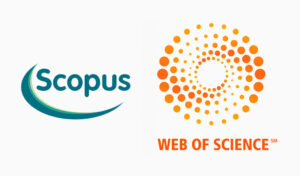
Ukrainian higher education institutions and scientific establishments will continue to enjoy free access to key international scientometric and full-text resources Scopus and WoS in 2026, according to the Ministry of Education and Science of Ukraine.
“Clarivate has confirmed uninterrupted access for Ukrainian institutions to Web of Science, InCites, and Derwent Innovation resources until December 31, 2026. The decision is aimed at supporting the Ukrainian scientific community and ensuring stable access to reliable scientific information in the context of the war,” the statement said.
It is noted that Elsevier has also confirmed the continuation of access for Ukrainian educational and scientific institutions to its scientific electronic resources, in particular Scopus and SciVal, in 2026, which will allow researchers and teachers to work with relevant international publications and use modern analytical tools.
In addition, Ukrainian universities and scientific institutions will have free access to full-text electronic resources on the Research4Life platform until the end of 2027.
“The Research4Life portal provides access to over 200,000 titles of books and journals from international publishers, including Elsevier, Springer Nature, John Wiley & Sons, Taylor & Francis, Emerald, Sage Publications, Oxford University Press, Cambridge University Press, IOP Publishing, and others,” the ministry said.
The Ministry of Education noted that continued access to international scientific resources is an important element of integrating Ukrainian science into the global research space and supporting the ability of educational and scientific institutions to operate even in conditions of full-scale war.

A rare sword from the times of Kievan Rus, accidentally found in the Zhytomyr region, was transferred to the National Museum of Ukrainian History. It is planned to be examined and transferred to the exhibition, the press service of the institution reported.
“On the eve of Christmas, our museum received an unexpected gift – (…) an ancient sword, accidentally found near Radomyshl, and two axes. This exceptional and rare sword dates back to the second half of the 10th – early 11th centuries. The Varangian guards of the Kyiv princes were armed with such swords,” the museum said in a Facebook post on Tuesday.
The artifacts found were donated to the museum by Viktor Moschenko and his daughter Natalia. It is noted that the location is also symbolic. Radomyshl is the territory of the former Drevlyans, where bloody events took place during the times of Oleg, Igor, and Olga.
The Slavic tribe of the Drevlyans lived in the Left Bank Polissya. It was an independent state with a developed economy, princely power, and fortified cities such as Iskorosten (modern Korosten), Vruchy (now Ovruch), Malyn, Mychesk, and Mykhorod (today Radomyshl).

The price of gold on the spot market hit a record high for the 50th time since the beginning of the year due to expectations of a Fed rate cut and demand for safe-haven assets.
During trading on Tuesday, the spot price of gold rose 0.7% to $4,473 per ounce. The day before, gold rose at a record pace for the month, and since the beginning of the year, it has risen 70% and shown the best annual dynamics since 1979.
Other precious metals are also rising in price: the cost of silver increased by 0.2% to $69.2 per ounce, platinum by 1.3%, and palladium by 1%.
Market participants are monitoring events surrounding Venezuela. According to media reports, last weekend the US Coast Guard attempted to intercept another oil tanker allegedly linked to the country’s shadow fleet.
“Geopolitical tensions are back on the agenda,” said Ahmad Assiri of Pepperstone Group. “These events may not have caused an immediate reaction, but they certainly increase the demand for gold as a hedge against risk.”
In addition, investors believe that the Fed will continue to lower its key rate amid a weakening labor market. Low interest rates are a positive factor for gold prices, as they increase the relative attractiveness of investments in precious metals, which do not generate interest income.
Goldman Sachs analysts predict that in 2026, gold will rise to $4,900 per ounce in the base scenario.

The property of Novokakhovsky processed cheese factory LLC (Kherson region), which is in the process of bankruptcy, has been put up for auction with a starting price of UAH 4.91 million, according to the Ukrainian Universal Exchange.
According to the information provided by the resource, one lot has been put up for auction, which includes 17 items of movable property: food industry equipment, in particular, packaging machines of various years of manufacture, a separator, clip machines, a vacuum packaging machine, installations for melting food raw materials and cheese, as well as motor vehicles – three Jungheinrich and Goodsense forklifts.
The auction will be conducted according to the English model (with a gradual increase in bids – IF-U) with a step of 1% of the starting price. To participate, a 10% security deposit must be paid.
The customer of the auction is the arbitration manager and liquidator of the enterprise, acting on the basis of the decision of the Economic Court of the Kherson Region dated December 9, 2021. At the same time, the debtor’s property is pledged to ProCredit Bank JSC.
The plant’s property is located in a war zone. The liquidator has warned that he cannot guarantee the safe inspection or preservation of the equipment until it is transferred to the buyer.
Applications to participate in the auction will be accepted until January 6. The auction is scheduled for January 7, 2026.